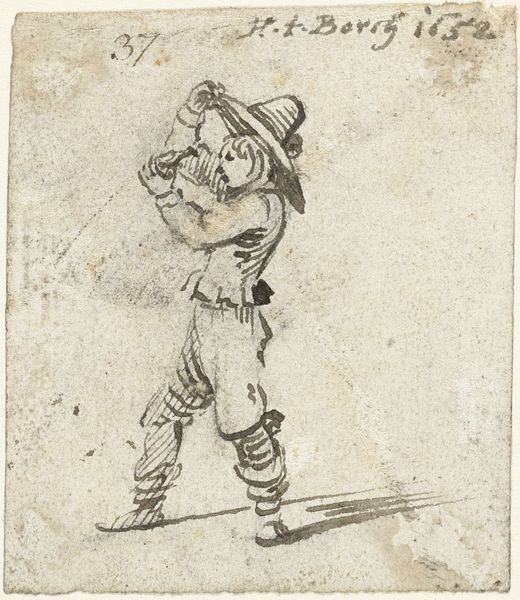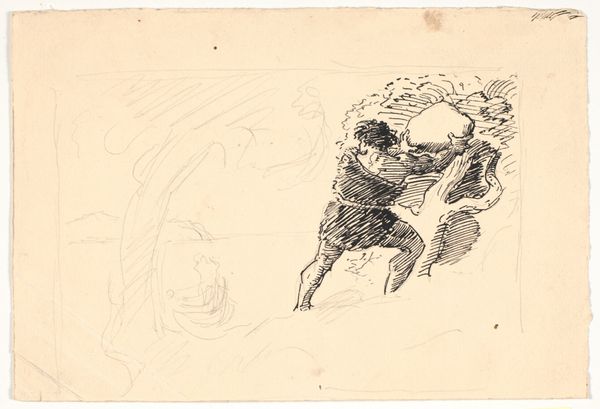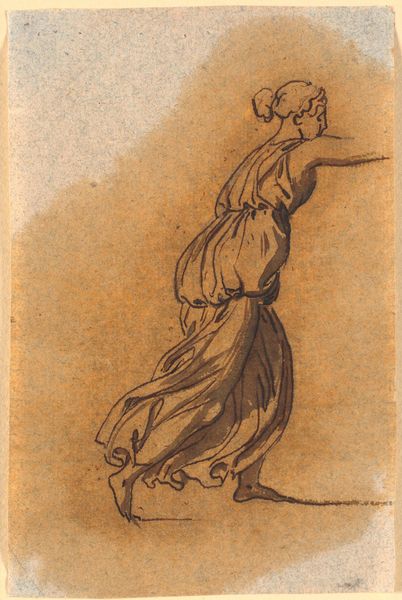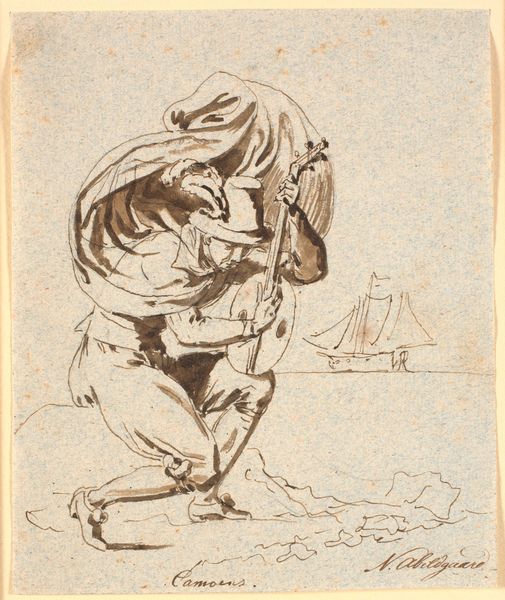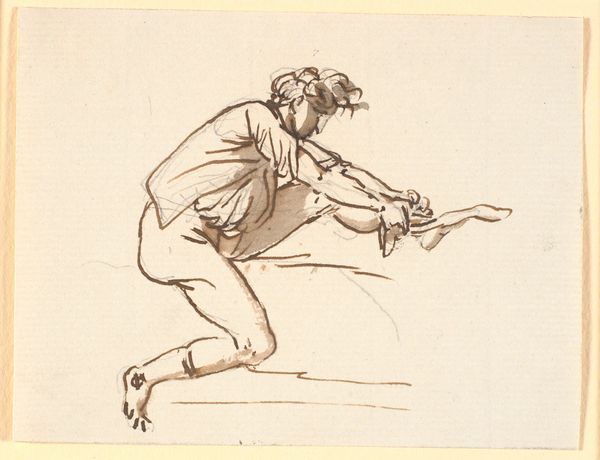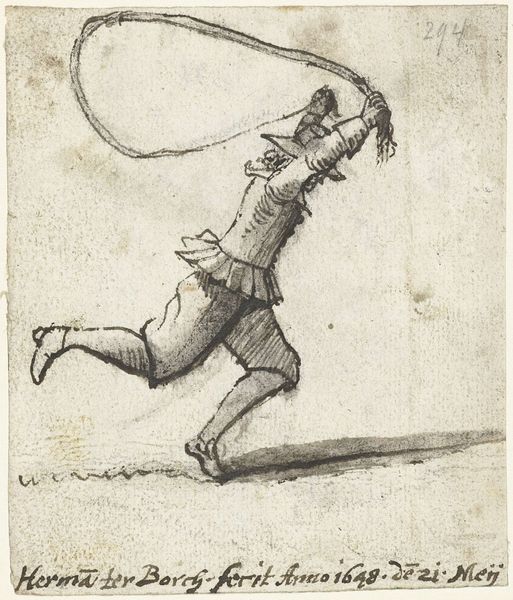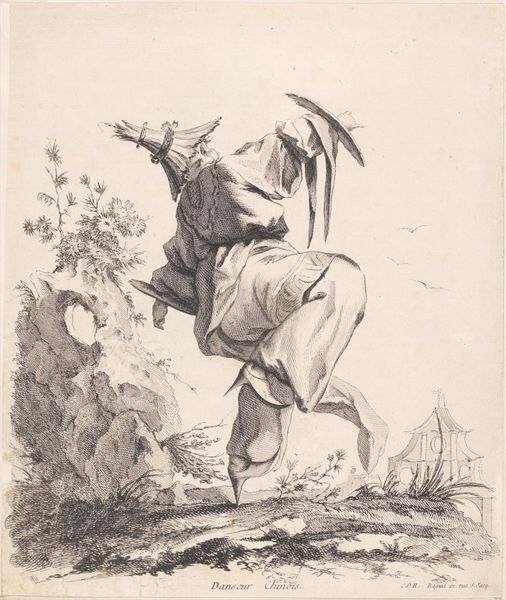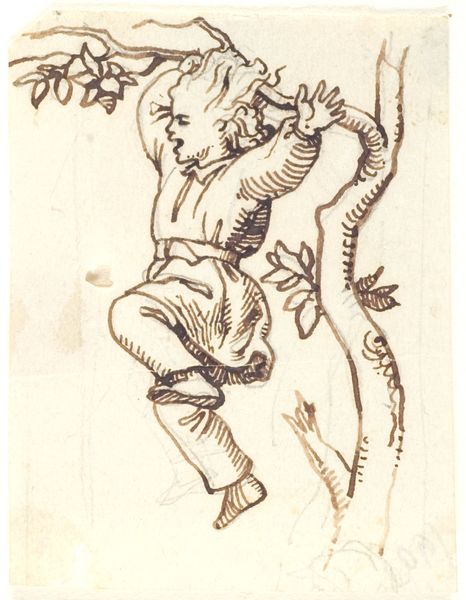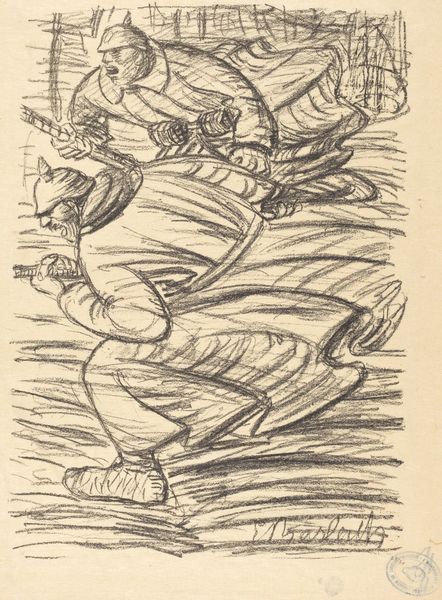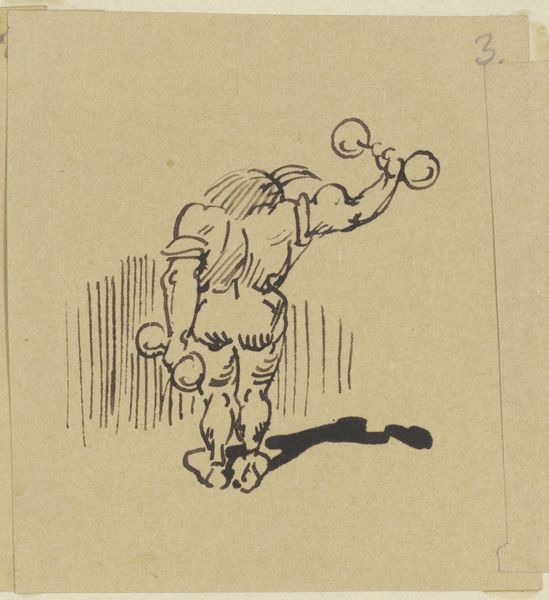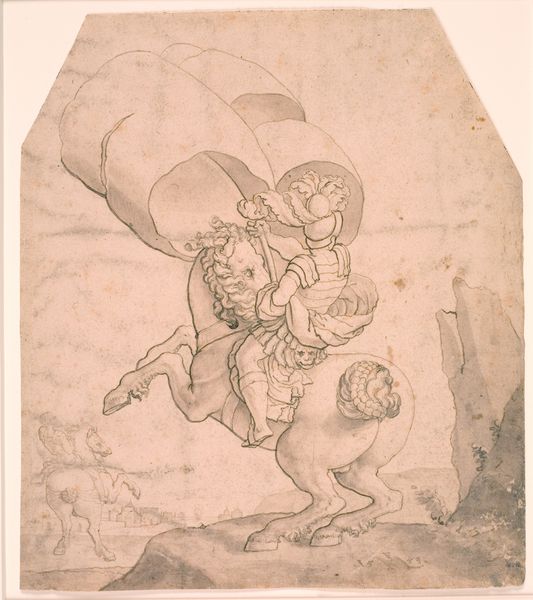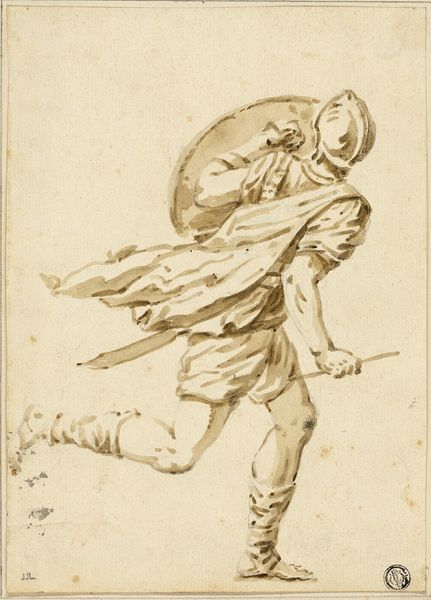
Dimensions: 39 mm (height) x 35 mm (width) (bladmaal)
Lorenz Frølich made this quick pen drawing of a running boy sometime in the 19th century. His style is inspired by ancient Greek vase paintings and Nordic mythology. Looking at the image, we see a figure in motion, perhaps escaping or hurrying toward something important. What social conditions might shape an artist's choice to depict such a subject? In 19th-century Europe, childhood was increasingly seen as a distinct phase of life, with its own needs and experiences. Artists and educators saw this as a time for growth, play, and protection from the harsh realities of the adult world. But childhood was also used as a symbol of national identity. Images of youthful vigor could represent the hopes and ambitions of a nation. Frølich's sketch might reflect these broader cultural trends. Historians use resources, like letters, diaries, and school records to interpret the sketch, situating it within the complex social and institutional contexts that shaped its creation and reception.
Comments
No comments
Be the first to comment and join the conversation on the ultimate creative platform.
